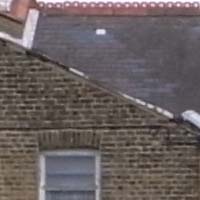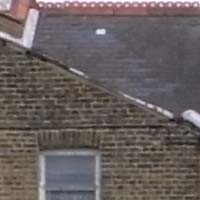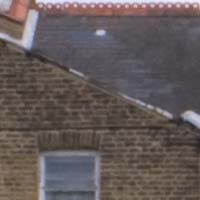Ricoh GR Digital II Review
Review Date: April 30th 2008
Author: Mark Goldstein
Leave a comment about this Review
|
Image Quality
All of the sample images in this Review were taken using the 10M (3648 x 2736 pixels) Fine JPEG setting, which gives an average image size of around 3.5Mb.
Noise
There are 6 ISO settings available on the Ricoh GR Digital II which you can select when the camera is in the Program or creative shooting modes. There is no discernible noise at the slowest settings of ISO 80 and 100, as you would expect, and ISO 200 also looks pretty good. There is some quite obvious noise at ISO 400 though, and by ISO 800 it is very obvious, together with high blurring of detail. ISO 1600 is in my opinion virtually unusable, looking good on the spec sheet, but terrible in reality. Here are some 100% crops which show the noise levels for each ISO setting:
ISO 80 (100% Crop) |
ISO 100 (100% Crop) |
 |
 |
ISO 200 (100% Crop) |
ISO 400 (100% Crop) |
 |
 |
ISO 800 (100% Crop) |
ISO 1600 (100% Crop) |
 |
 |
File Quality
The Ricoh GR Digital II has 2 different JPEG image quality settings available, with Fine being the highest quality option. Here are some 100% crops which show the quality of the various options, with the file size shown in brackets.
10M
Fine (3.21Mb) (100% Crop) |
10M
Normal (2.11Mb) (100% Crop) |
 |
 |
10M
RAW (14.46Mb) (100% Crop) |
|
 |
|
Sharpening
Here are two 100% crops which have been Saved as Web - Quality 50 in Photoshop. The right-hand image has had some sharpening applied in Photoshop. The out-of-the camera images are a little soft at the default sharpening setting of Normal. You can change the in-camera sharpening level to one of the preset levels (Sharp, Normal or Soft) if you don't like the default look.
Original
(100% Crop) |
Sharpened (100% Crop) |
 |
 |
 |
 |
Chromatic Aberrations
The Ricoh GR Digital II handled chromatic aberrations excellently during the review, with very small levels of purple fringing mainly present around the edges of objects in high-contrast situations, as shown in the examples below.
Example
1 (100% Crop) |
Example
2 (100% Crop) |
 |
 |
Macro
The Ricoh GR Digital II offers a Macro setting that allows you to focus on a subject that is just 1.5cms away from the camera when the lens is set to wide-angle. The first image shows how close you can get to the subject (in this case a compact flash card). The second image is a 100% crop.
Macro Shot |
Macro Shot (100% Crop) |
 |
 |
Flash
The flash settings on the Ricoh GR Digital II are Off, Auto, Flash On, Red-eye Flash, and Flash Synchro. These shots of a white coloured wall were taken at a distance of 1.5m.
Flash Off - Wide Angle (28mm) |
Auto Flash - Wide Angle (28mm) |
 |
 |
And here are some shots of yours truly. Both the Flash On setting and the Red-Eye Reduction option caused a tiny amount of red-eye.
Flash On |
Flash On (100% Crop) |
 |
 |
Flash - Red-Eye Flash |
Flash - Red-Eye Flash (100% Crop) |
 |
 |
Night Shot
The Ricoh GR Digital II's maximum shutter speed is 180 seconds, which is excellent news if you're seriously interested in night photography. The shot below was taken using a shutter speed of 15 seconds, aperture of f/5 at ISO 80. I've included a 100% Crop of the image to show what the quality is like.
Night Shot |
Night Shot (100% Crop) |
 |
 |
Overall Image Quality
The Ricoh GR Digital II's image quality is good. The Ricoh GR Digital II's main drawback in terms of image quality is noise, with ISO 400 showing obvious noise and blurring of detail. The noise gets progressively worse as you go from ISO 400 to ISO 800 and finally the completely unusable 1600 setting. The Ricoh GR Digital II handled chromatic aberrations very well indeed with limited purple fringing effects appearing only in high contrast situations. The 10 megapixel images were just a little soft straight out of the camera at the default sharpen setting of Normal. The night photograph was very good, with the maximum shutter speed of 180 seconds allowing you to capture as much light as you need for the majority of after-dark situations. Note that the camera takes the same amount of time to process the shot as the shutter speed set e.g. 30 seconds processing time for a 30 second exposure, so 60 seconds in total. Macro performance is also a stand-out highlight, allowing you to focus as close as 1.5cms away from the subject, although there is lens distortion and shadowing at such a close distance. The built-in flash worked quite well indoors, with little red-eye, fairly good range and pleasing overall exposure. Overall, a good performance that is only let down by the noise levels at ISO 400 and above.
|
![]() PhotographyBLOG
is a member of the DIWA
organisation. Our test results for the Ricoh GR Digital II have been submitted to DIWA
for comparison with test results for different samples of
the same camera model supplied by other DIWA
member sites.
PhotographyBLOG
is a member of the DIWA
organisation. Our test results for the Ricoh GR Digital II have been submitted to DIWA
for comparison with test results for different samples of
the same camera model supplied by other DIWA
member sites.
